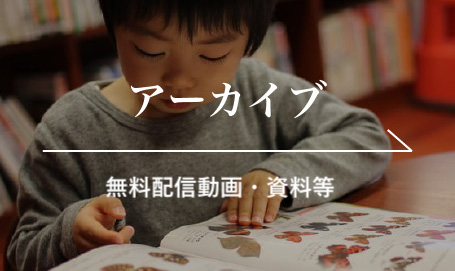< VOLUME 50, No.1 >
Shiratori Mami, Kannno Kazue. Stress Patterns of Nursery Teachers in Daycare Centers for Children with Disabilities.
Research on Early Childhood Care and Education in Japan, 2012, 50(1), 20-28.
This study through a questionnaire survey, investigates the stress patterns of nursery teachers in daycare centers for children with disabilities. The results indicated the following four factors ; being busy, human relation problems, difficulty in supporting children and parents, and insufficient understanding of disabilities and low social evaluation. The last two factors are considered to be a stressor specific for children with disabilities, because there is an insufficient acceptance of disabilities in the society. Then, the relationship between stressor scores and years of work experience was examined. The results indicated that nursery teachers with more than 10 years experience had a better recognition of the last two factors. It is concluded that the problems faced by nursery teachers differ according to the years of experience. Moreover, 59.3% of the participants had low mental health.
Keywords: daycare centre for children with disabilities, nursery teachers, stressor, mental health, questionnaire survey
—————–
Nakatsubo Fuminori, Akita Kiyomi, Masuda Tokie, Minowa Junko, Yasumi Katsuo. The Styles of Kindergarten Teachers’ Discourse and Their Prescribed Factors in Early Childhood Education and Care Conferences.
Research on Early Childhood Care and Education in Japan, 2012, 50(1), 29-40.
The purpose of this study is to examine kindergarten teachers’ discourse styles and factors as observed at early childhood education and care conferences. Participants include 22 teachers from four kindergartens. They reviewed videotaped presentations and analyzed the teachers’ discourse. This study revealed two main styles : (1)Teachers share words and exchange ideas with colleagues, or(2) Teachers rarely share words and exchange ideas with colleagues. The first style was indicated by the following factors: (a) ‘Ne’-utterances as the ending particle ; (b) Making agreeable responses ; and, (c) Acting to rephrase colleagues’ words with their own words. The second style was determined by : (a) Analyzing the situations ; (b) Critical thinking ; and, (c) Speaking order of those being observed.
Keywords: early childhood education and care conferences, kindergarten teachers, discourse styles, share words and exchange ideas with colleagues
—————–
Sato Kazuyuki. Work-life-balance Consciousness of the Students who Aspire to Become Teachers or Childcare Workers.
Research on Early Childhood Care and Education in Japan, 2012, 50(1), 41-52.
This research is focused on kindergartens, nursery schools and elementary schools in which a view of gender role is formed. In terms of work-life-balance and a gender-equal-society, a survey was conducted for speculating consciousness of the teachers or childcare workers who will become involved with children in the future. The following three points were discovered : First, a view of gender role and a work-life-balance have a fixed relevance to each other. Secondly, students have nothing to do with a view of gender role. When they get employed, the work is placed in the center of their lives. This is different from their ideal life, and there exists a difference between an ideal life and real life. Thirdly, the problem is that work-life-balance is not basically understood thoroughly by the students.
Keywords: work-life-balance, gender-equal-society, a view of sexual role, students who aspire to become teachers or childcare workers, reproduction
—————–
Uemura Masao. Study on Childcare Teachers’ Mental Health : With a Focus on Their Years of Experience.
Research on Early Childhood Care and Education in Japan, 2012, 50(1), 53-60.
The mental health of female childcare teachers is increasingly becoming an issue as their work diversifies and the working environment grows harsher. We focus on the years of experience as a factor in their mental health status, as their appreciation for certain social supports or interest in their profession changes over the duration of their career. As a result, I found that the mental health status of the target childcare teachers as a whole is below the average of adult females. Furthermore, the mental health status of newcomers is particularly poor compared to the middle-ranking and veteran teachers. The study highlights the need for ideas to alleviate the mental strain on childcare teachers.
Keywords: childcare teacher, mental health, years of experience
—————–
Suzuki Sakiko. A Study of Self-review for Early Childhood Education in New Zealand.
Research on Early Childhood Care and Education in Japan, 2012, 50(1), 61-71.
This research explores what is self-review, investigating the concept of self-review, the review process, and elements of effective review in New Zealand ; focusing on Nga Arohaehae Whai Hua : Self-Review Guidelines for Early Childhood Education(2006). This study also clarifies the present conditions and problems of self-review practices in New Zealand. The findings of this study suggest that self-review is the process of gathering, analyzing information and formulating decisions in order to implement improvement. It is also crucial to understand that self-review is both a reflective and collaborative practice. This necessitates an examination of the relationship existing between self-evaluation of individual teachers and self-evaluation of the day care center in Japan.
Keywords: early childhood education, self-review, self-evaluation, Nga Arohaehae Whai Hua:Self-review Guidelines for Early Childhood Education, New Zealand
—————–
Unno Mayako, Fujita Sumito. Understanding Children’s Gestures while Playing : A Focus on Gestures and the Peer Relationships among Three-Year-Olds.
Research on Early Childhood Care and Education in Japan, 2012, 50(1), 6-19.
This study aims to observe the gestures that children make while playing and to explain these gestures meanings and effects. Study 1 observes the gestures that three-, four-, and five-year-old children make when they play, and quantitatively analyzes the gestures characteristics. Results revealed that spontaneous gestures were most prevalent in five-year-olds, and body manipulation gestures were most prevalent in three-year-olds. Study 2 follows and observes groups of girls who displayed many of the gestures displayed in Study 1 and conducts a qualitative analysis. Results revealed three distinct effects of the gestures that these children displayed while playing: (1) conveying one’s emotions to others, (2) seeking a reaction from others in response to one’s gestures, and (3) sharing a mutual image with others. Among these three effects, with regard to (2) and (3), the nature of the relationship among children is one factor in determining the “completion” or “incompletion” of the gesture. As such, this indicates that the gestures performed by children while playing are heavily influenced by the relationship between the child performing the gesture and the child at whom the gesture is directed.
Keywords: three-year-olds, gestures, relationship
—————–









